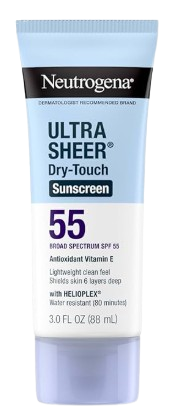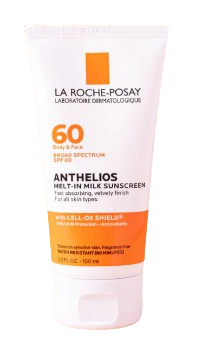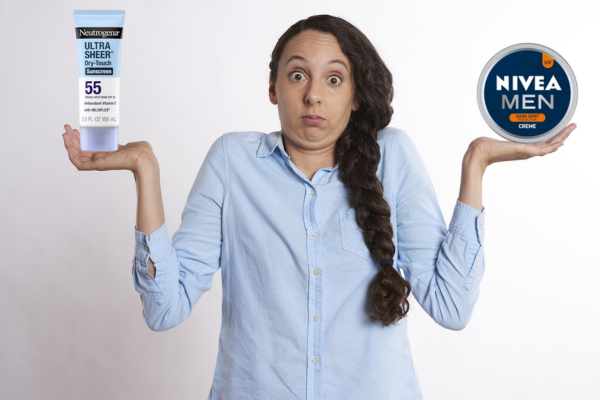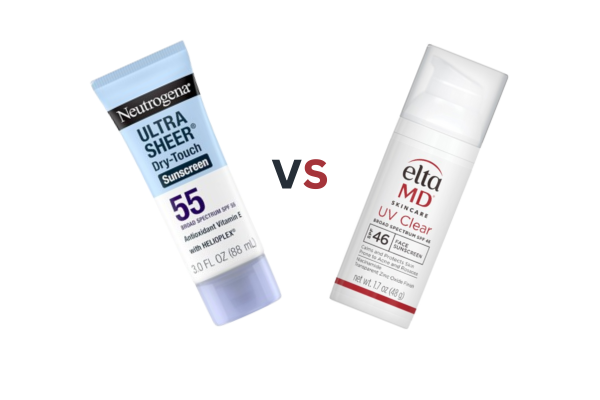In the sweltering heat of a South Indian summer, Priya stood under the sun waiting for her cab after college. The humidity made her skin feel sticky, and by the time she reached home, her cheeks were already tinged red. A week earlier, her dermatologist had warned her: “Sunscreen is not optional—it’s your skin’s daily armor.” But how was she to pick the right one when shelves overflowed with tall claims and shiny tubes? That’s where we step in—with a deep dive into two of the most popular and dermatologist-approved sunscreens: Neutrogena Ultra Sheer Dry-Touch SPF 50+ and La Roche-Posay Anthelios Melt-In Milk SPF 60.
This article is tailor-made for readers like Priya—those seeking the best sunscreen to protect their skin from harmful UV rays, early aging, and even skin cancer.
At Shopwithchoice, we aim to make that decision easier by evaluating products not just on promises, but on performance, science, and real-world use.
Table of Contents
Product Overview
Neutrogena Ultra Sheer Dry-Touch SPF 50+
Made by Johnson & Johnson, this sunscreen boasts Helioplex technology—a stabilized complex that offers superior protection from UVA (aging) and UVB (burning) rays. The texture is lightweight and non-greasy, making it an excellent daily-wear sunscreen. It’s designed to absorb quickly and provide a matte finish, ideal for oily to combination skin.
La Roche-Posay Anthelios Melt-In Milk SPF 60
Backed by dermatological science and popular among skincare professionals, this sunscreen is formulated by L’Oréal under the La Roche-Posay brand. It’s water-resistant, rich in antioxidants, and designed for both face and body. It caters to sensitive skin while offering robust SPF 60 protection.
Features | Neutrogena Ultra Sheer Dry-Touch SPF 50+ | La Roche-Posay Anthelios Melt-In Milk Sunscreen SPF 60 |
|---|---|---|
Preview |  |  |
Brand | Neutrogena | La Roche-Posay |
Skin Type | Combination | Combination |
Sun Protection Factor | 88 Sun Protection Factor (SPF) | 60 Sun Protection Factor (SPF) |
Net Quantity | 88 Milliliters | 150 Milliliters |
Buy Now |
Key Ingredients Breakdown
Neutrogena Ultra Sheer Dry-Touch SPF 50+:
- Homosalate, Benzophenone-3, Ethylhexyl Salicylate, Octocrylene: Powerful UV filters
- Butyl Methoxydibenzoylmethane: Offers UVA protection
- Silica & Dimethicone: Controls oil and gives a matte texture
- Fragrance, Parabens: Present, which may concern sensitive users
La Roche-Posay Anthelios Melt-In Milk SPF 60:
- Avobenzone 3%, Homosalate 10%, Octisalate 5%, Octocrylene 7%: High-spectrum UV filters
- Glycerin, Tocopherol (Vitamin E): Skin moisturizers and antioxidants
- Alcohol Denat.: Enhances absorption but can be drying
- Cassia Alata Leaf Extract: A botanical antioxidant for sun-induced cell protection
Benefits
| Feature | Neutrogena SPF 50+ | La Roche-Posay SPF 60 |
|---|---|---|
| Sun Protection | Broad Spectrum (UVA + UVB) with SPF 50+ | Broad Spectrum with higher SPF 60 |
| Finish | Matte, oil-free | Silky, hydrated feel |
| Water Resistance | Up to 80 minutes | Up to 80 minutes |
| Suitability | All skin types, especially oily/combination | All skin types, great for sensitive skin |
| Dermatologist Tested | Yes | Yes |
| Antioxidant Boost | No | Yes (Cassia Alata + Vitamin E) |
How to Use
Step-by-Step Application:
- Apply 15 minutes before sun exposure.
- Use a nickel-sized amount for the face and a shot-glass amount for the body.
- Reapply every 2 hours or after swimming/sweating.
Pro Tip: Apply as the last step in your skincare routine but before makeup.
Who Should Buy?
Neutrogena Ultra Sheer Dry-Touch SPF 50+:
- Best for students, office-goers, and budget-conscious users
- Ideal for oily or acne-prone skin types
- Good for daily city exposure
La Roche-Posay Melt-In Milk SPF 60:
- Best for outdoor workers, athletes, or beachgoers
- Ideal for sensitive or dry skin
- Recommended for high UV index regions
Pros and Cons
Neutrogena SPF 50+:
La Roche-Posay SPF 60:
My Honest Experience
Rather than providing a week-by-week diary, here’s a realistic breakdown of what you can expect.
- Texture: Neutrogena is airy and vanishes quickly, whereas La Roche-Posay feels more emollient and nourishing.
- Protection: Both performed excellently under regular sunlight, but La Roche-Posay seemed to edge ahead during outdoor activities like hiking.
- Makeup Compatibility: Neutrogena works better under makeup due to its matte finish.
- Comfort on Skin: La Roche-Posay offers longer-lasting hydration, which helped prevent dryness and peeling after long sun exposure.
- Breakouts: Neutrogena may be more suitable if you’re acne-prone.
Stats and Science
- According to the Skin Cancer Foundation, regular daily use of SPF 15 or higher reduces the risk of developing squamous cell carcinoma by about 40%, and melanoma by 50%.
- A clinical study published in JAMA Dermatology (2020) found that only 30% of users apply enough sunscreen to achieve the labeled SPF value.
- Neutrogena’s Dry-Touch sunscreen is backed by Helioplex technology, proven to maintain stability under UV exposure, unlike some older sunscreens whose protection breaks down quickly.
- La Roche-Posay’s Melt-In Milk SPF 60 has been recognized in Allure’s Best of Beauty Awards multiple times for its high SPF and antioxidant complex.
How Shopwithchoice Can Help You
At Shopwithchoice, we understand the confusion that comes with selecting a sunscreen—especially when both products look equally promising. That’s why we break it down by science, practicality, and user expectations. Our goal is to help you choose the best sunscreen to protect your skin with confidence, transparency, and zero bias. Whether you’re a budget shopper or someone with sensitive skin seeking premium protection, our detailed reviews and comparison guides give you the insights you need before buying.
Conclusion
Choosing between Neutrogena Ultra Sheer Dry-Touch SPF 50+ and La Roche-Posay Melt-In Milk SPF 60 boils down to your lifestyle and skin type. If you need something light, affordable, and daily-wear friendly, Neutrogena is your pick. For those demanding higher SPF, hydration, and advanced antioxidant support, La Roche-Posay offers a premium experience.
No product is perfect—but understanding the ingredients, benefits, and scientific backing helps you make a smarter choice.
So, are you ready to invest in the right sunscreen and give your skin the protection it truly deserves?





